UV Exposure Safety Calculator
UV Index 0-2 (Low): Minimal risk. A 30-minute walk is safe for most skin types.
UV Index 3-5 (Moderate): Start thinking about shade or sunscreen after about 30 minutes of exposure.
UV Index 6-7 (High): Limit direct sun to 15-20 minutes without protection.
UV Index 8-10 (Very High): Protective clothing and SPF 30+ sunscreen are a must within 10 minutes.
UV Index 11+ (Extreme): Stay under shade or indoors if possible; even brief exposure can start DNA damage.
Recommended Safe Exposure Time
Did you know that almost one in three adults will develop at least one actinic keratosis (AK) lesion by age 60? The culprit is the same thing that gives us a golden tan: ultraviolet (UV) light. If you’ve ever wondered where the line between a healthy glow and a risky burn is, this guide breaks it down in plain English.
What Exactly Is Actinic Keratosis?
Actinic Keratosis is a rough, scaly patch that forms on skin repeatedly exposed to UV radiation. It is considered a precancerous growth because, if left untreated, about 1% of AKs progress to squamous cell carcinoma each year. Most AKs pop up on the face, ears, scalp, forearms, and hands-areas that can’t hide from the sun.
How UV Radiation Damages Your Skin
Sunlight contains two main types of UV rays that matter for skin health:
- UVA penetrates deep into the dermis, breaking down collagen and accelerating aging.
- UVB targets the outer epidermis, causing sunburn and direct DNA damage that can trigger AK.
Both UVA and UVB create free radicals, mutate skin cell DNA, and suppress the immune response that would normally eliminate abnormal cells.
How Much Sun Is Too Much?
There isn’t a universal “hours per day” rule because UV intensity varies with latitude, season, altitude, and cloud cover. Instead, dermatologists use the UV Index as a guide:
- UV Index 0‑2 (Low): Minimal risk. A 30‑minute walk is safe for most skin types.
- UV Index 3‑5 (Moderate): Start thinking about shade or sunscreen after about 30 minutes of exposure.
- UV Index 6‑7 (High): Limit direct sun to 15‑20 minutes without protection.
- UV Index 8‑10 (Very High): Protective clothing and SPF30+ sunscreen are a must within 10 minutes.
- UV Index 11+ (Extreme): Stay under shade or indoors if possible; even brief exposure can start DNA damage.
In Austin, for example, the UV Index frequently hits 8-9 from late May through early September. That means a 20‑minute unprotected beach day could already be enough to spark new AK lesions if you’re already prone.
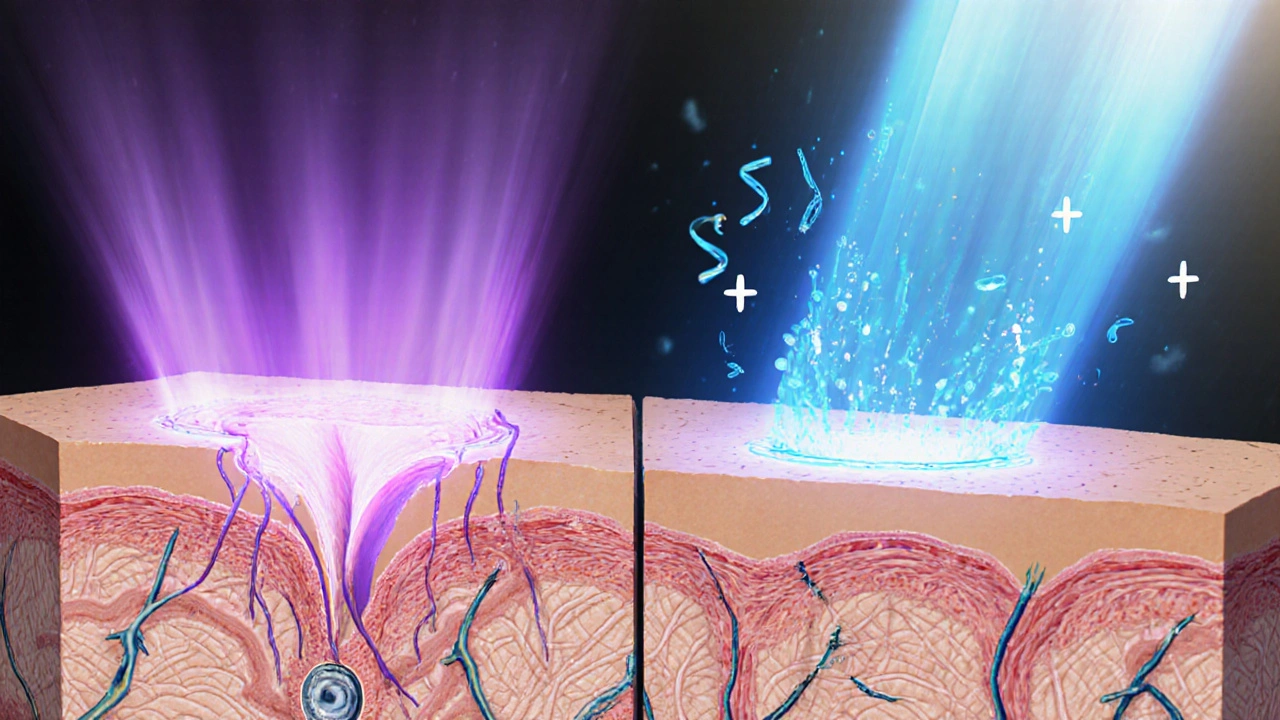
Factors That Influence Your Personal Risk
Not everyone reacts the same way to sun. Consider these variables:
| Factor | How It Affects Risk | Typical Value |
|---|---|---|
| Fitzpatrick Skin Type | Skin that burns easily (Types I‑II) accumulates DNA damage faster. | Type I: always burns, never tans |
| Age | DNA repair slows with age, increasing lesion count. | Risk rises sharply after 50 |
| Genetics | Family history of skin cancer magnifies susceptibility. | ~20% of AK patients have close relatives with SCC |
| Occupational Sun | Outdoor jobs add cumulative exposure. | Construction workers average 200+ hrs/year |
| Immunosuppression | Weakened immune surveillance lets abnormal cells survive. | Organ transplant recipients have 10‑fold higher AK rates |
The Fitzpatrick scale, first described by ThomasFitzpatrick in 1975, classifies skin from TypeI (pale, always burns) to TypeVI (dark, rarely burns). Knowing your type helps you set realistic protection goals.
Practical Ways to Keep Sun Exposure in Check
Here’s a straightforward daily checklist you can stick on your bathroom mirror:
- Apply sunscreen 15 minutes before heading out. Use broad‑spectrum SPF30+ which blocks both UVA and UVB rays.. Reapply every two hours, or after swimming.
- Wear protective clothing: long‑sleeve shirts, wide‑brim hats, and UV‑filter sunglasses.
- Seek shade during peak hours (10am‑4pm).
- Check the UV Index on your phone or local weather channel before planning outdoor activities.
- Perform skin self‑exams monthly. Look for rough, red‑brown spots that don’t heal.
If you notice a new lesion, schedule a visit with a dermatologist a skin specialist trained to biopsy and treat AK.. Early treatment is quick, painless, and prevents progression.
When to See a Dermatologist - Warning Signs
Most AKs feel like harmless sandpaper, but watch for these red flags:
- Growth that becomes thicker, crusty, or bleeds.
- Persistent soreness or itching despite sunscreen use.
- Multiple lesions appearing rapidly over a few weeks.
These could signal squamous cell carcinoma (SCC), a type of skin cancer that needs prompt removal.
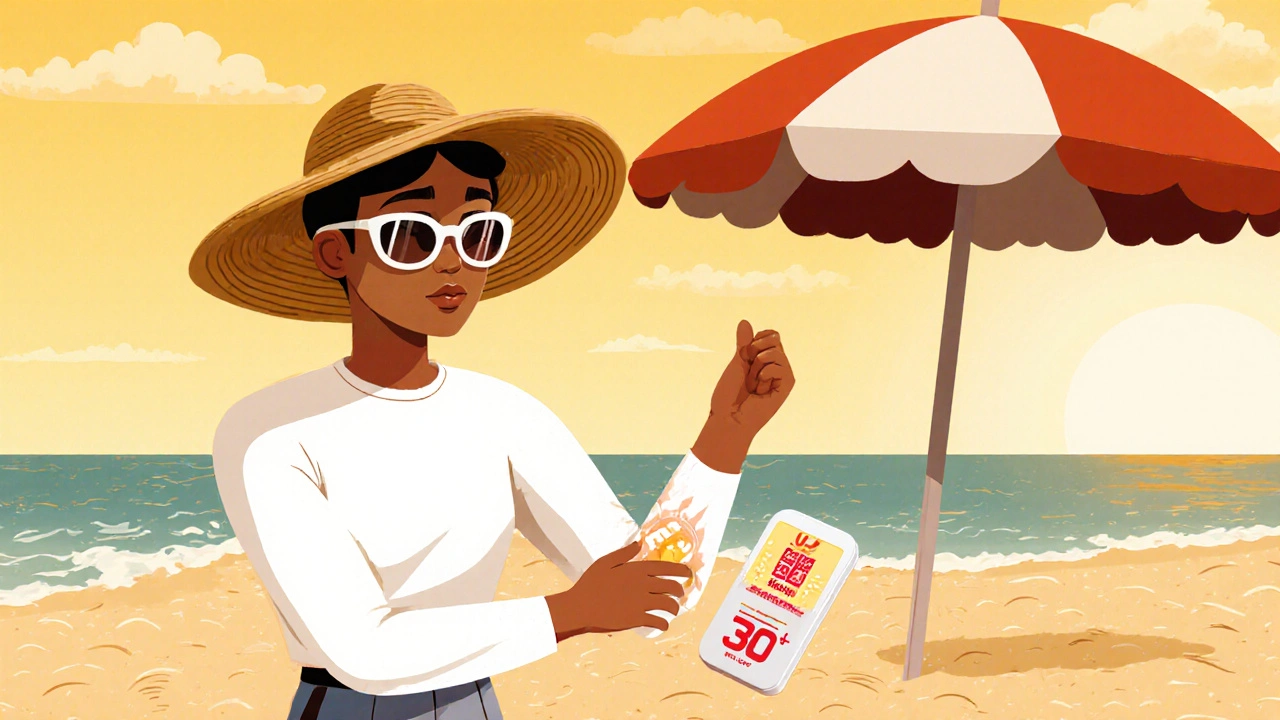
Treatment Options - From DIY to Clinic
Small, isolated AKs can often be treated at home with over‑the‑counter prescription‑strength creams like 5‑fluorouracil or imiquimod. However, most dermatologists prefer in‑office techniques because they’re faster and have higher clearance rates:
- Cryotherapy: Liquid nitrogen freezes the lesion, causing it to slough off in days.
- Photodynamic therapy (PDT): A light‑sensitive gel is applied, then activated with a specific wavelength, destroying abnormal cells.
- Topical agents: Prescription creams that trigger an immune response to clear AK.
- Excisional surgery: Reserved for lesions that look suspicious for SCC.
Most treatments have a 70‑90% success rate for clearing visible AKs, but new lesions can appear later if sun habits don’t change.
Quick Takeaways
- Actinic keratosis is a sun‑induced precancer that can turn into squamous cell carcinoma.
- UVA penetrates deep; UVB burns and mutates DNA-both drive AK formation.
- Use the UV Index to gauge safe exposure time; high UV (8+) means under 10 minutes without protection.
- Broad‑spectrum SPF30+ sunscreen, protective clothing, and regular skin checks are your best defense.
- Any suspicious or persistent lesion warrants a dermatologist visit.
Frequently Asked Questions
Can Actinic Keratosis disappear on its own?
Rarely. Most AKs stay on the skin indefinitely or slowly enlarge. Leaving them untreated raises the chance of progression to squamous cell carcinoma.
Is SPF15 enough to prevent AK?
SPF15 blocks about 93% of UVB but offers limited UVA protection. Dermatologists recommend broad‑spectrum SPF30+ for reliable AK prevention.
How often should I check my skin for AK?
A quick self‑exam once a month is ideal. If you notice changes between exams, schedule a dermatologist visit promptly.
Do indoor workers need sunscreen?
Yes. UVA rays penetrate windows, and reflected UV from sidewalks can reach you even on a commute. Applying sunscreen daily protects against cumulative exposure.
What’s the difference between AK and a regular sunburn?
A sunburn is an acute inflammation that fades in a week. AK is a chronic, thickened patch that persists and can turn cancerous over months or years.
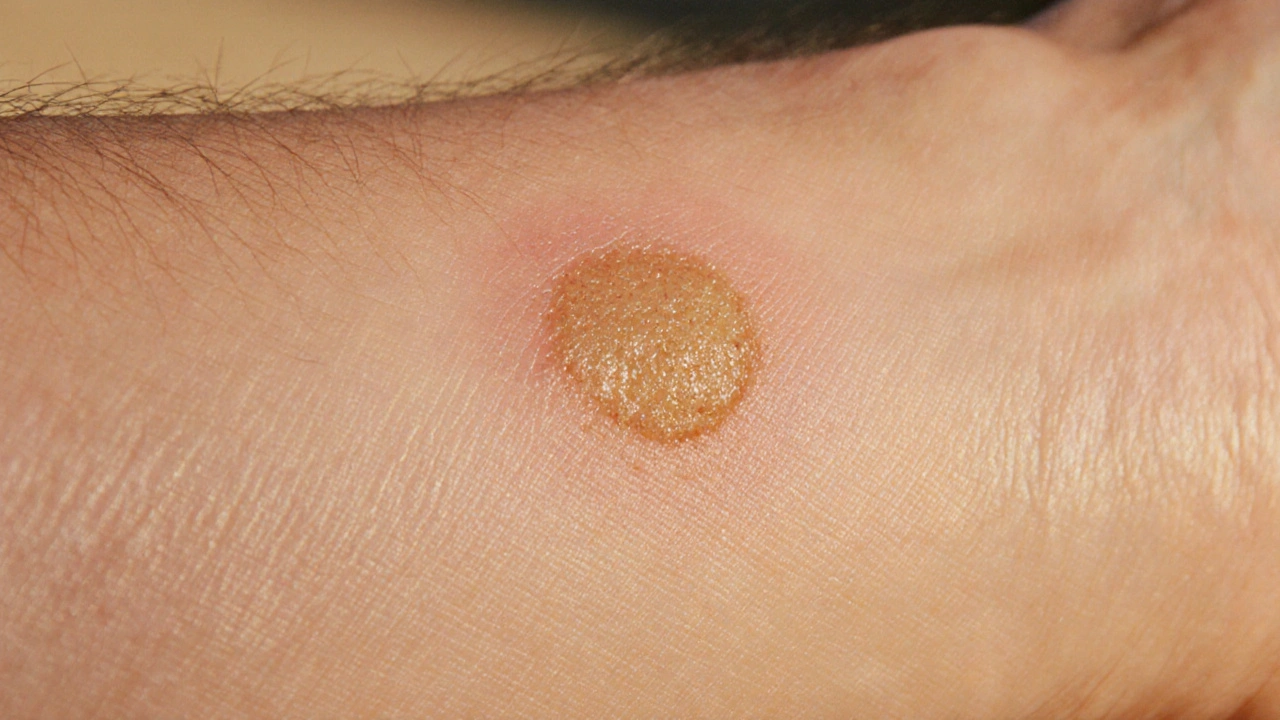
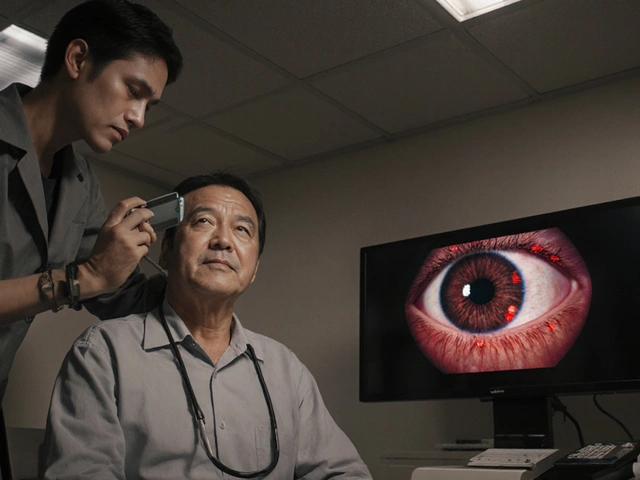
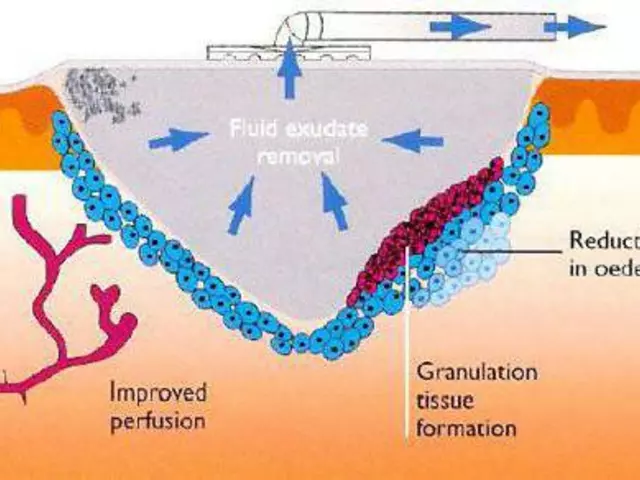
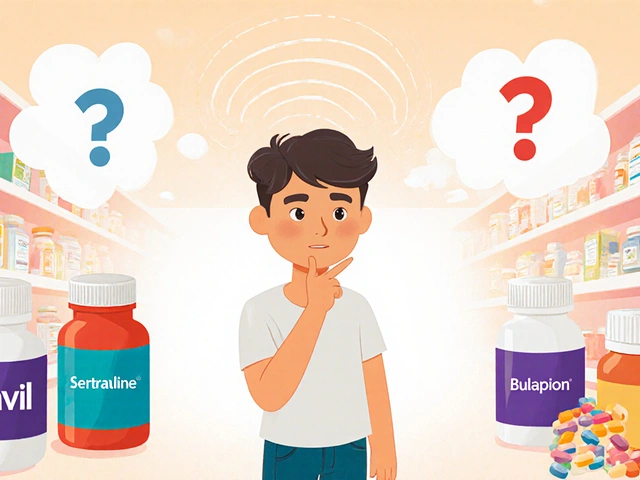


ayan majumdar
6 October 2025 - 18:17 PM
Thanks for the clear rundown on sun safety.
Johnpaul Chukwuebuka
7 October 2025 - 17:54 PM
Wow, that’s a solid guide! Just remember to slather on SPF even when it’s cloudy, because UV sneaks through most clouds.
Xavier Hernandez
8 October 2025 - 17:30 PM
We all share this planet’s sunshine, but it’s a cruel gift if we ignore it. The skin is our body’s first line of defense, so treating it with respect is non‑negotiable. Skipping sunscreen is practically an invitation to future health woes, and that’s simply unacceptable. Let’s commit to daily protection as a civic duty.
Zach Yeager
9 October 2025 - 17:07 PM
In America we champion freedom, yet we must also defend our skin from relentless UV rays. The government’s sunscreen guidelines are solid, and we should follow them without whining.
Angel Gallegos
10 October 2025 - 16:44 PM
While the article attempts to be comprehensive, it suffers from a lack of depth that would satisfy a discerning reader. The prose oscillates between bland bullet points and half‑hearted explanations, which feels rather pedestrian for a topic of such clinical importance. Moreover, the omission of emerging photoprotection technologies betrays an elementary oversight.
ANTHONY COOK
11 October 2025 - 16:20 PM
Analyzing the data, it’s evident that the risk curve spikes dramatically after UV‑index 7 😊. The statistics support a proactive approach: wear hats, use SPF30+, and limit exposure to under ten minutes in extreme conditions 😎.
Sarah Aderholdt
12 October 2025 - 15:57 PM
The interplay between UV type and DNA damage is a classic case of cause and effect, reminding us that prevention is wiser than cure. A balanced routine of protection and regular skin checks embodies this principle.
Phoebe Chico
13 October 2025 - 15:34 PM
Sunlight, the ancient fire, gifts us life yet whispers danger in each ray. Embracing its warmth while shielding our skin is the poetry of modern stewardship.
Larry Douglas
14 October 2025 - 15:10 PM
Ultraviolet radiation constitutes a well‑characterized mutagenic agent with documented effects on cutaneous cellular homeostasis. The two primary components, UVA and UVB, differ in wavelength but converge on the creation of reactive oxygen species. UVA penetrates the dermal extracellular matrix, inducing collagen degradation and photo‑aging. UVB, with its higher energy photons, directly induces cyclobutane pyrimidine dimers in epidermal DNA. The accumulation of such lesions, if unrepaired, fosters the clonal expansion of atypical keratinocytes. Epidemiological studies consistently demonstrate a dose‑response relationship between cumulative UV exposure and actinic keratosis prevalence. Fitzpatrick skin types I and II exhibit markedly reduced melanin shielding, thereby experiencing higher mutation rates per unit UV dose. Protective measures, including broad‑spectrum sunscreen with a Sun Protection Factor of at least 30, attenuate both UVA and UVB transmission. Proper application-approximately two milligrams per square centimetre of skin-and reapplication at two‑hour intervals are critical to maintaining efficacy. Physical barriers such as UPF‑rated clothing and wide‑brimmed hats provide ancillary defense, particularly during peak solar hours. Behavioral modifications, such as seeking shade between 10 a.m. and 4 p.m., further diminish cumulative exposure. Dermatologic interventions, ranging from topical fluorouracil to cryotherapy, achieve clearance rates upward of 80 % when applied to early lesions. Nonetheless, surveillance remains indispensable, as new actinic keratoses can arise despite rigorous photoprotection. The integration of regular skin self‑exams with professional dermatoscopic assessments optimizes early detection. In summary, a multilayered strategy combining chemical, physical, and behavioral prophylaxis constitutes the most effective defense against UV‑induced cutaneous neoplasia.
Michael Stevens
15 October 2025 - 14:47 PM
That breakdown really ties everything together-thanks for the thorough explanation! I’ll definitely step up my sunscreen game and keep a closer eye on my skin.
Ann Campanella
16 October 2025 - 14:24 PM
Skipping sunscreen is just lazy.
Desiree Tan
17 October 2025 - 14:00 PM
Listen, you can’t afford to ignore the facts-apply sunscreen now and protect yourself!
Andrea Dunn
18 October 2025 - 13:37 PM
They don’t want you to know that the “government guidelines” are a cover for hidden chemicals in sunscreen 😒. Trust the natural shade of trees instead.
Erin Johnson
19 October 2025 - 13:14 PM
Oh, absolutely, because we’ve all been waiting years for a Reddit post to finally teach us that SPF exists. The irony is delicious when you realize most people still burn on a cloudy day.